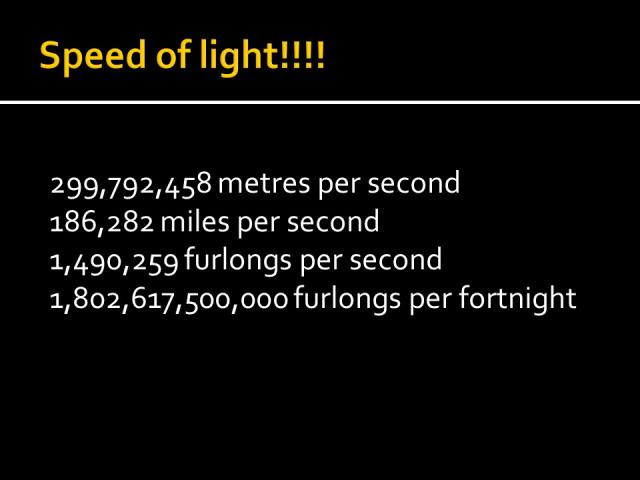› Forums › General Discussion › How tall is a giraffe?
- This topic has 25 replies, 17 voices, and was last updated 1 year, 9 months ago by
 Alex Pratt.
Alex Pratt.
-
AuthorPosts
-
19 February 2019 at 5:10 pm #574256
 Nick JamesParticipant
Nick JamesParticipantOver the years scientists and engineers have developed a precise and internally consistent set of measurement units to describe physical objects. Unfortunately these are often considered too complicated for the general public to understand so journalists often use what I call Non-Technical Units (NTUs) in their reporting. Length in terms of double-decker busses, volume in swimming pools, area in places the size of Wales, you get the idea.
The most bizarre example of NTUs yet must surely be this article from the Express regarding the close approach of NEO 2019 CS5 (disclaimer this link was sent to me by a colleague, it should not to be used for actual information):
It starts with the fairly conventional “4.6-times as long as a London double-decker bus and 9.5-times longer than a Volkswagen Beetle car” but then progresses to the positively bizarre: “the space rock is believed to be about nine times as long as a Queen Size bed and about three times taller than an average giraffe”.
That’s certainly one for my collection.
19 February 2019 at 7:26 pm #580708 Peter CarsonParticipant
Peter CarsonParticipantLike that helps?
I’ve only got a vague idea how big a Queen size bed is, I assume the Queen needs a bigger bed than the one I sleep in. I’ve only seen a giraffe at a zoo when I was a kid and that’s a distant memory.
I’ll stick with metres, kilometres and miles, I know how big they are.
19 February 2019 at 7:46 pm #580710 Nick JamesParticipant
Nick JamesParticipantIndeed. If there is an ISO standard giraffe then there aren’t many of them roaming the streets of Chelmsford for reference. At least I have a vague idea of how long a double decker bus is. I’m hoping that the journo that wrote this did it tongue in cheek but it is very difficult to tell…
19 February 2019 at 7:53 pm #580711 Ray EmeryParticipant
Ray EmeryParticipantWhat’s that in Americans’ chief measure – football fields?
19 February 2019 at 8:48 pm #580716 Grant PrivettParticipant
Grant PrivettParticipantIs that real football or the other sort?
Perhaps play it safe and measure in perch, rods and chains*?
* For those unfamiliar with the joys of the archaic Imperial units. A chain is the same length as a cricket pitch 🙂
19 February 2019 at 9:18 pm #580717 Michael O’ConnellParticipant
Michael O’ConnellParticipantIf they had just kept it to beard-seconds, it would have been much simpler…
https://royal.pingdom.com/strange-funny-and-baffling-units-for-measuring-almost-anything/
20 February 2019 at 8:51 am #580719 Tracie HeywoodParticipant
Tracie HeywoodParticipant As can be seen from this photo I took in Tanzania in 2013, giraffes are so tall that they have to reach down to the tree tops … or maybe the “trees” in the photo are really just bushes23 February 2019 at 8:05 pm #580740
As can be seen from this photo I took in Tanzania in 2013, giraffes are so tall that they have to reach down to the tree tops … or maybe the “trees” in the photo are really just bushes23 February 2019 at 8:05 pm #580740 Steve KnightParticipant
Steve KnightParticipant Of course it’s just possible they mean the Elizabeth Tower. Big Ben is a big bell but not that big.24 February 2019 at 4:56 am #580742
Of course it’s just possible they mean the Elizabeth Tower. Big Ben is a big bell but not that big.24 February 2019 at 4:56 am #580742 Nick JamesParticipant
Nick JamesParticipantThat’s the length of 8 London buses…
24 February 2019 at 5:06 am #580743 Nick JamesParticipant
Nick JamesParticipantIndeed. The speed of light is defined to be exactly 299,792,458 m/s but how much more fun it is to quote it in obscure units. I think it is around 1803 giga-furlongs/fortnight. At least a furlong is well defined (1/8 mile or approx 201m). The problem with NTUs is that they are so vague. How tall is a giraffe and what is the volume of a swimming pool? In most cases I don’t really think they help to visualise the object being described.
24 February 2019 at 11:53 am #580744 Peter MulliganParticipant
Peter MulliganParticipantI once used a scale to try to visualise interstellar distances, at least out to the Proxima Alpha Cen system. I would represent the Solar system as a sixteenth of an inch dot and call that 10,000,000,000 miles diameter, that’s out into the Kuiper belt. Of course we know the Solar system is vaster than this, this is just a rough estimate. The nearest star on this scale would be thirteen feet away, The Voyager spacecraft have just come off the sixteenth inch dot. I haven’t worked out how many tall Giraffes would fill the interstellar void, I don’t think I’ll bother!
24 February 2019 at 1:20 pm #580745 Gary PoynerParticipant
Gary PoynerParticipantOr 2,336 weather owls
24 February 2019 at 1:36 pm #580746 David SwanParticipant
David SwanParticipantLOL. Would you ask your weather owl if it can arrange for the fog here to be ‘burned off’, so that I might, this evening, have a look at the dwarf nova in Monoceros that Robin has highlighted. Or does the owl just predict the weather? It faintly reminds me of a favourite character from childhood – the mechanical owl in the 1981 Clash of the Titans, constructed by Hephaestus so that Athena does not have to be parted from her beloved pet.
 24 February 2019 at 2:35 pm #580747
24 February 2019 at 2:35 pm #580747 Gary PoynerParticipant
Gary PoynerParticipantDavid,
If there is any fog to be burned off, it’s concentrating on Birmingham first but alas it just predicts. I too want to see ASASSN-19de (easier to write than the TCP designation).
Good luck
Gary
24 February 2019 at 3:29 pm #580748 Grant PrivettParticipant
Grant PrivettParticipantWhats a bus in furlongs?
25 February 2019 at 11:55 am #580754Roger Dymock
ParticipantYou must have missed it Nick – see https://www.bookatable.co.uk/giraffe-chelmsford-essex
25 February 2019 at 2:03 pm #580755 Steve KnightParticipant
Steve KnightParticipantNick, you should have been at my “Speed of Light” talk to Newbury in January. I even measured it with some chocolate and a microwave oven. One of my slides is attached. Your statement should be 1802.6175 Gigafurlongs per fortnight!

 25 February 2019 at 11:49 pm #580759
25 February 2019 at 11:49 pm #580759 Nick JamesParticipant
Nick JamesParticipantOK Steve, you are going to have to explain how you measured the speed of light using a microwave oven and some chocolate. I’m guessing it is a rather circular argument involving standing waves and melted chocolate. What would Michelson and Morley make of it?
25 February 2019 at 11:52 pm #580760 Nick JamesParticipant
Nick JamesParticipantOne standard London bus is 0.05517776187067525650202815557146 furlongs long to within the accuracy of my calculator so this must be true.
26 February 2019 at 7:57 pm #580762 Dr Paul LeylandParticipant
Dr Paul LeylandParticipantI generally measure things in attoparsecs, one of which is about the distance between the end of my thumb and its first knuckle. Femtoparsecs are useful for measuring car journeys.
Densities should always be quoted in international standard carats per cubic fathom.
I thought everyone knew that the speed of light is a foot per nanosecond to an adequate accuracy. It’s all you need to know if you want to make delay lines from optical fibre. Remind me someday, when you’re especially bored, to recount the time when I helped build a photon time-of-flight spectrometer. (It should be well known that the speed of light depends on wavelength ;-). The guy who designed and did >90% of the construction had a peer-reviewed paper published in a reputable journal.
-
AuthorPosts
- You must be logged in to reply to this topic.
